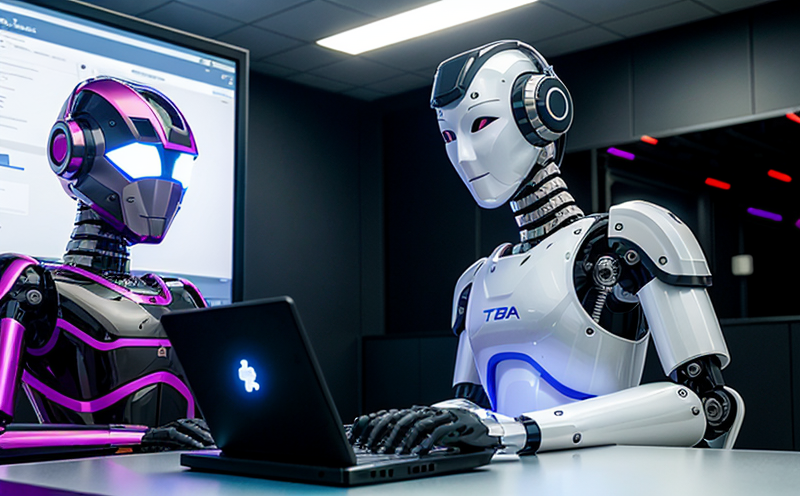ISO/IEC 15408 Common Criteria Security Evaluation for Robots
The ISO/IEC 15408 Common Criteria (CC) is a widely recognized framework for the security evaluation and certification of IT products, systems, and components. In recent years, there has been growing interest in extending this approach to non-IT domains, including robotics and artificial intelligence (AI). The application of ISO/IEC 15408 in the context of robots introduces a structured methodology to assess and verify the security properties of robotic systems.
Robots are increasingly integrated into various industries such as manufacturing, healthcare, agriculture, and defense. These systems often handle sensitive data, interact with human operators, and perform critical tasks that could have significant safety implications if compromised. Therefore, ensuring robust cybersecurity measures is paramount to prevent unauthorized access, manipulation, or disruption of robotic operations.
The Common Criteria framework provides a standardized approach for evaluating the security policies, mechanisms, and assurance claims made about IT products. When applied to robots, it helps in defining clear requirements, assessing compliance with these requirements through rigorous testing, and issuing formal certificates when those requirements are met. This process ensures that robotic systems meet industry standards and regulatory expectations.
The evaluation covers several key aspects of a robotic system's security posture:
- Security Functional Requirements (SFR): Identifying the necessary functions to protect the integrity, confidentiality, and availability of data and operations within the robot.
- Security Assurance Requirements (SAR): Ensuring that the methods used to achieve SFR are reliable and meet specified criteria.
- Product Security Target (PST): A detailed description of the security objectives for a particular robotic system.
- Security Functional Analysis: Analyzing how each function contributes to achieving overall security goals.
The evaluation process typically involves multiple stages, including:
- System Description: Providing detailed documentation about the robot's architecture, components, and intended use cases.
- Security Requirement Analysis: Determining what security properties are required based on risk assessments and stakeholder needs.
- Testing and Validation: Conducting tests to verify that the robot meets its specified security requirements. This may include penetration testing, vulnerability scanning, and simulation exercises.
- Certification: Issuing a certificate if all evaluated criteria are satisfied, indicating compliance with ISO/IEC 15408 standards.
This structured approach not only enhances the security of robotic systems but also provides transparency and trustworthiness to stakeholders. By adhering to international best practices, organizations can ensure that their robotic solutions are secure, reliable, and capable of operating safely in complex environments.
Our team of experts ensures that every aspect of your robotic system is thoroughly evaluated using the latest tools and methodologies. We provide detailed reports outlining all findings, recommendations for improvement, and certification where appropriate. This service helps you comply with regulatory requirements while also protecting sensitive information and maintaining operational integrity.
Applied Standards
The ISO/IEC 15408 Common Criteria is supported by numerous international standards that provide additional guidance on various aspects of security evaluation. Some key references include:
- ISO/IEC 15408-3: Guidelines for the use of security functional and assurance requirements.
- ISO/IEC 15408-4: Methodology for specifying security targets and ensuring their implementation.
- ISO/IEC 15408-5: Guidance on assessing the security policies of IT products, systems, or components.
- ISO/IEC 27032: Requirements for information security management related to cyber security of physical infrastructures and industrial automation systems.
These standards complement each other, providing a comprehensive framework that addresses all facets of cybersecurity in robotic systems. Our laboratory adheres strictly to these guidelines to ensure the highest level of accuracy and reliability in our evaluations.
Eurolab Advantages
At Eurolab, we pride ourselves on offering unparalleled expertise and comprehensive services tailored specifically for your organization's needs. Here are some reasons why choosing us for ISO/IEC 15408 Common Criteria Security Evaluation is the right decision:
- Experienced Professionals: Our team comprises highly skilled engineers and security experts who understand both the technical intricacies and business implications of robotic cybersecurity.
- State-of-the-Art Facilities: Equipped with advanced testing equipment capable of simulating real-world scenarios, ensuring accurate assessments under various conditions.
- Comprehensive Reporting: Detailed reports are provided to help you understand the evaluation results and identify potential areas for improvement.
- Regulatory Compliance: Ensuring that your robotic systems meet all relevant regulatory requirements, thereby minimizing compliance risks.
- Custom Solutions: We work closely with clients to develop customized solutions that address unique challenges posed by their specific applications.
- Continuous Improvement: Leveraging cutting-edge research and development efforts, we stay ahead of emerging threats and incorporate them into our evaluation processes.
With Eurolab's support, you can be confident in the robustness and reliability of your robotic systems while minimizing associated risks. Our commitment to excellence sets us apart as a leader in this field.
Use Cases and Application Examples
The application of ISO/IEC 15408 Common Criteria Security Evaluation extends beyond theoretical considerations; it has practical implications across multiple sectors. Here are some real-world examples:
Manufacturing Robotics: Ensuring that automated manufacturing robots adhere to strict security protocols is crucial for preventing unauthorized access, theft of proprietary designs, and potential sabotage.
Healthcare Robotics: With patient data being handled by robotic assistants, it's essential to secure these systems against cyber threats. ISO/IEC 15408 helps in safeguarding sensitive medical information from breaches.
Defense Robotics: Autonomous drones and other military robots require stringent security measures due to their critical roles in operations. Common Criteria ensures that such systems are resilient against adversarial attacks.
Agricultural Robotics: As precision agriculture becomes more reliant on robotic technology, ensuring data integrity is vital for optimizing crop yields and managing resources efficiently.
Service Robotics: In sectors like hospitality or logistics, where robots interact directly with customers, maintaining high levels of security protects against malicious activities that could harm user trust.
In all these cases, applying ISO/IEC 15408 provides a robust foundation for building secure robotic systems capable of performing their intended functions reliably and safely.





